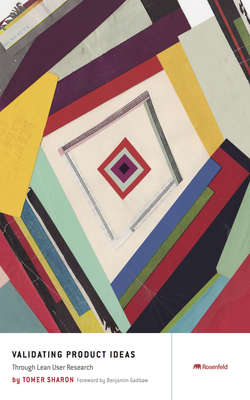Читать книгу Validating Product Ideas - Tomer Sharon - Страница 15
На сайте Литреса книга снята с продажи.
Other Questions Experience Sampling Helps Answer
ОглавлениеOther than the “What do people need?” question, experience sampling is a great method for answering the following questions as well. If you ask yourself (not users) any one of these questions, experience sampling is a technique that can help you get an answer.
• Would people be willing to pay to use the product?
• How do we make using this product a habit?
Clarification: The worst way to know if people would pay to use a product or if they would use it repeatedly is ask them directly. Humans are very bad at predicting their future behavior. In experience sampling, you explore people’s current behavior, which is the best predictor of future behavior. You won’t know for sure if they’ll pay for your product or make a habit of using it. But if you ask the right experience sampling question (see Step 1 later in the chapter), you will know what they currently pay for, how they currently behave, and how painful certain needs are for them. These will give you strong insights and indications of whether they might pay for a product or make a habit of using it. You are not going to be 100% sure because there are many other factors at play here (price point, marketing, timing of product release, and many more), but you will have a greater understanding of a need.
• Is there a need for the product?
Experience sampling is not a way to evaluate product design. It is, however, helpful in evaluating whether or not there’s a need for a specific product you have in mind (or at hand). The key is to explore people’s current behavior without your product and evaluate whether or not they indicate a need that matches the value your product is (or will be) adding.
• Why do people sign up and then not use the product?
• What are some use cases we should plan for?
• Would people use the product?
• How do people choose what to use among similar options?
• Does the product solve a problem people care enough about?
• Which customer needs does the product satisfy?
• How do we define the right requirements for the product?
• How will the product solve people’s pain points?
• Which features should be included in an MVP?
Clarification: MVP is an experiment that has a goal of learning as much as you can while making the smallest amount of effort. It’s a process, not an end goal. Therefore, although you might be asking yourself which features to include in an MVP, understanding needs and problems real people have through experience sampling (and other methods) puts you in a better position to come up with an experimentation process.
• What are some feature ideas our customers have?
• Which features are most important?
• Should we build [specific feature]?
• How often would people use the product?
• Would people from other cultures use the product?
